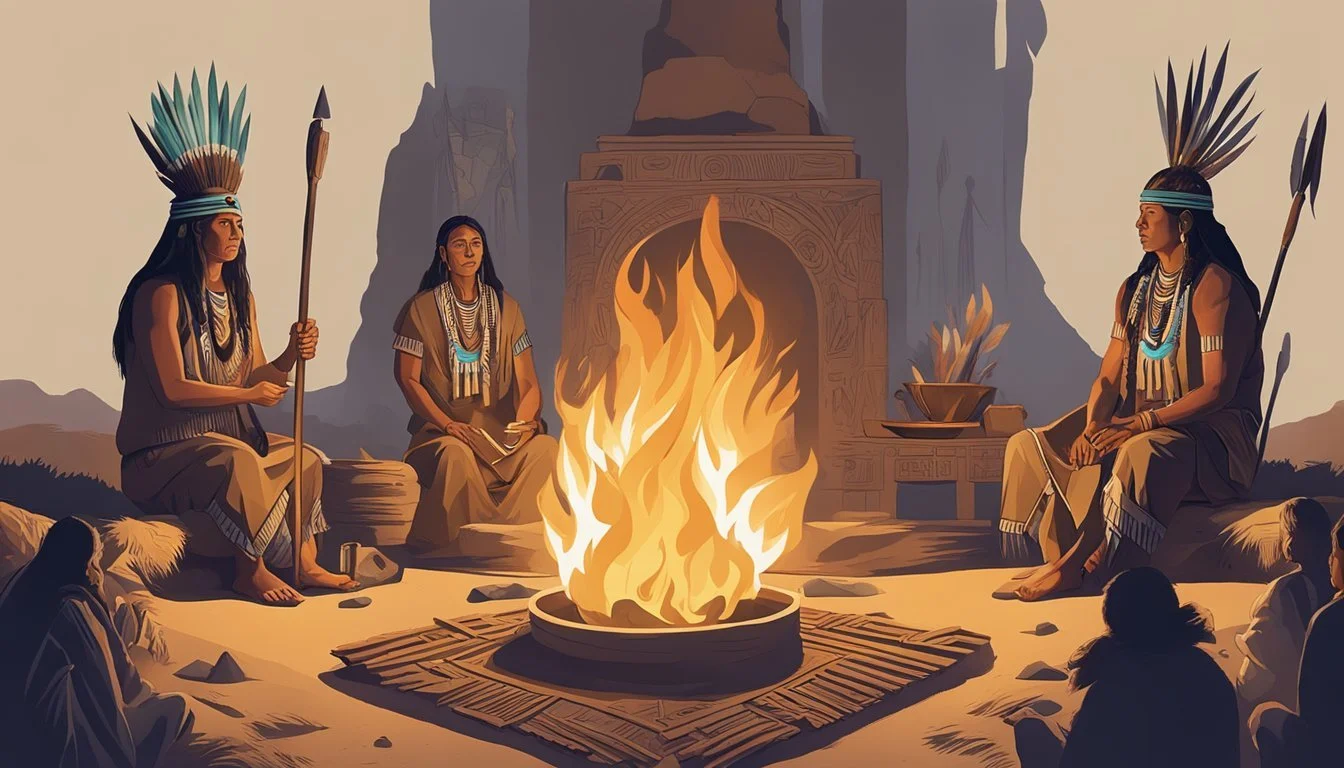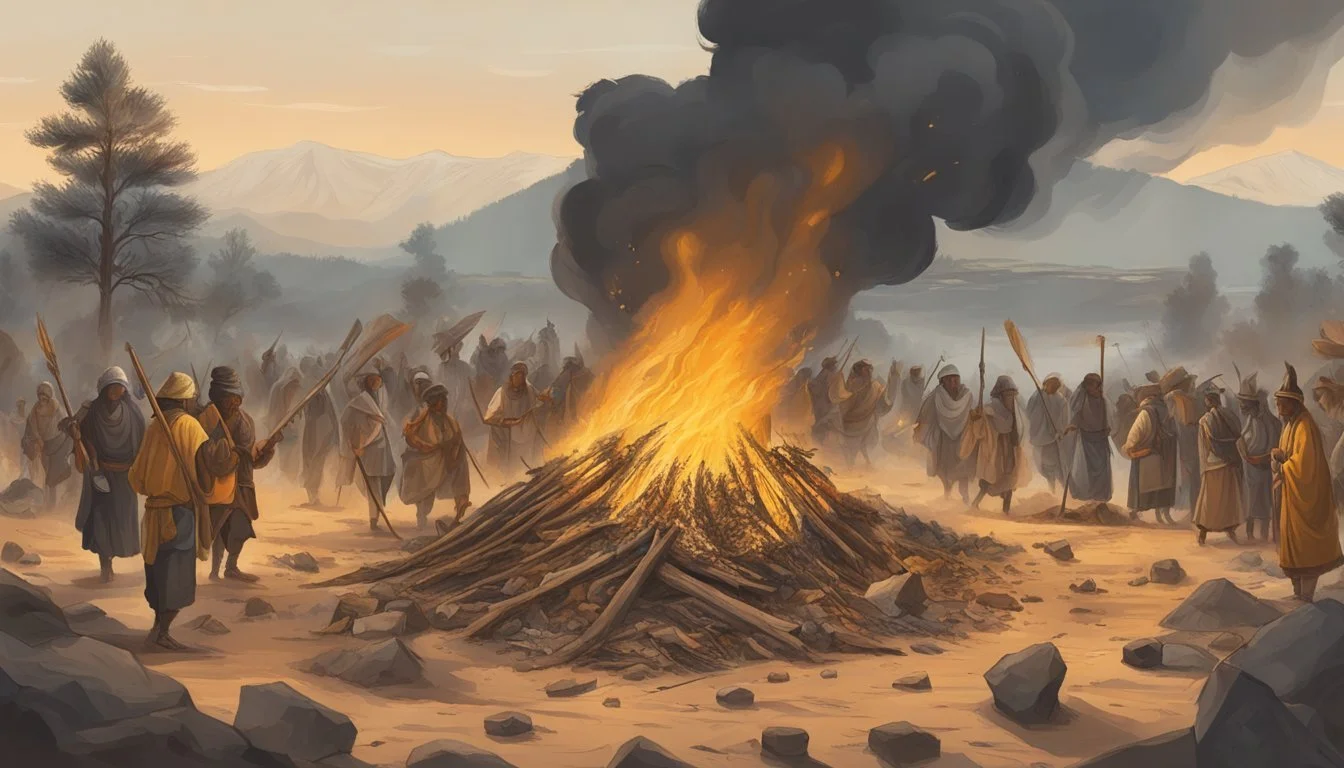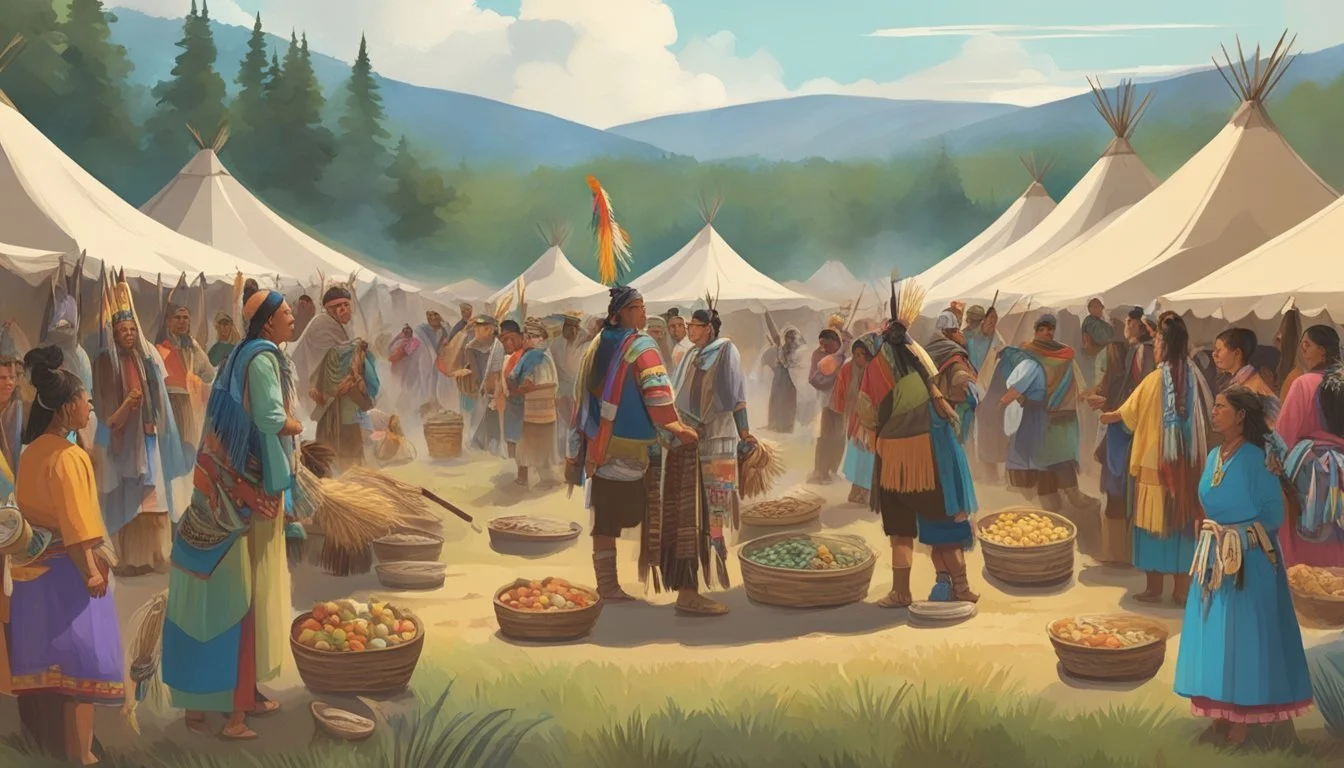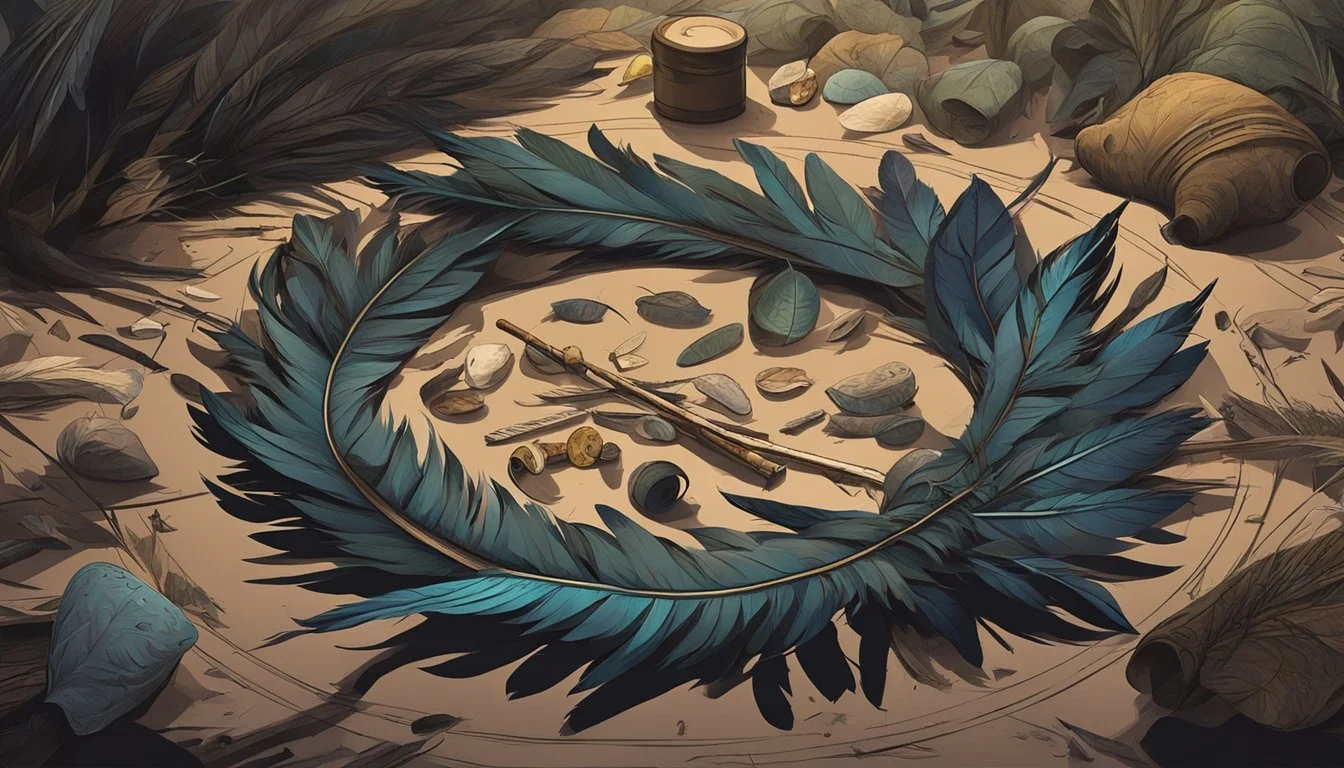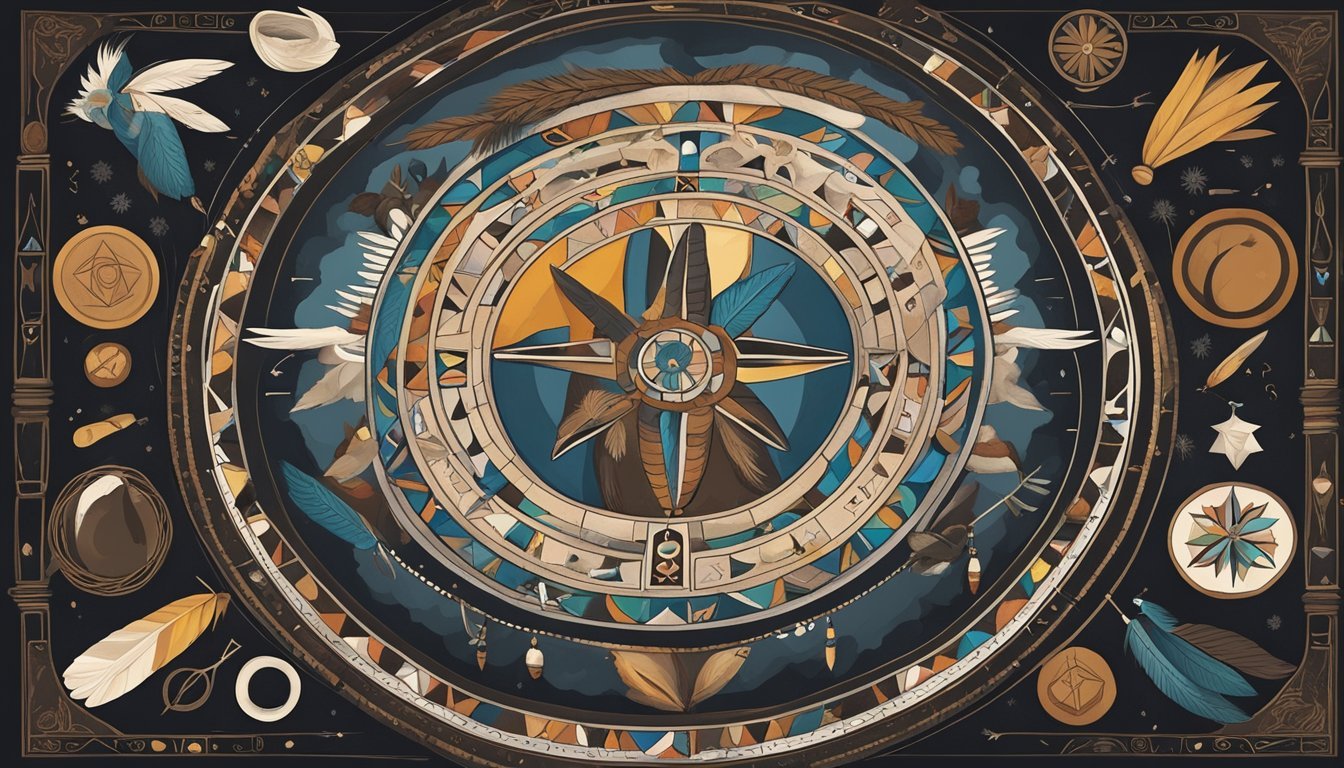Billy Glaze: 7 Native American Traditions Exploited by the Native Slayer
A Disturbing Analysis of Cultural Appropriation in Serial Killings
Billy Glaze's case has long captivated public interest, raising questions about the criminal justice system and the exploitation of Native American traditions. Convicted of murdering three Native American women in Minnesota during the 1980s, Glaze spent 25 years in prison before his death in 2015.
Recent DNA evidence has cast doubt on Glaze's guilt, potentially implicating another individual in these crimes. This development has reignited discussions about the investigation and prosecution of crimes against Native American communities. The case continues to spark debates about cultural sensitivity, law enforcement practices, and the ongoing fight for justice for Indigenous victims.
1) Exploitation of Sacred Rituals
Billy Glaze, known as the Native Slayer, manipulated and misused sacred Native American rituals to gain trust and access to his victims. He often claimed knowledge of traditional ceremonies to appear connected to indigenous communities.
Glaze would offer to perform purification rites or healing ceremonies for vulnerable individuals. These false rituals allowed him to isolate potential victims and exploit their trust in Native spiritual practices.
The killer sometimes used sacred objects like pipes or eagle feathers as props in his deceptions. By misappropriating these revered items, he created an illusion of authenticity that helped mask his true intentions.
Glaze's exploitation of sacred traditions deeply wounded Native American communities. His actions not only harmed individuals but also profaned cherished spiritual beliefs and practices central to indigenous cultures.
The misuse of rituals by Glaze highlighted the broader issue of cultural appropriation and exploitation faced by Native American communities. His case serves as a stark reminder of the importance of protecting and respecting indigenous spiritual traditions.
2) Misrepresentation of Tribal Art
Billy Glaze exploited Native American art traditions to gain trust and access to vulnerable communities. He claimed to be a talented artist skilled in traditional techniques, but his work was inauthentic and poorly executed.
Glaze frequently sold counterfeit pieces marketed as genuine Native American art. This practice not only deceived buyers but also undermined legitimate Native artists struggling to make a living from their craft.
By misrepresenting tribal art forms, Glaze contributed to the spread of stereotypes and inaccurate portrayhs of Native American culture. His fake pieces often incorporated Hollywood-inspired imagery rather than authentic tribal designs.
The sale of counterfeit Native American art remains an ongoing issue. It harms Native communities economically and culturally by flooding the market with inauthentic works. Glaze's actions were part of this larger problem of cultural appropriation and exploitation.
Authentic Native American art holds deep cultural and spiritual significance. Glaze's misuse of these traditions showed a profound disrespect for the peoples and cultures he targeted. His actions highlighted the importance of protecting Native art forms from misrepresentation and exploitation.
3) Cultural Appropriation in Fashion
Native American fashion has long been a target of cultural appropriation in the mainstream fashion industry. Designers and brands often incorporate traditional Native elements into their collections without proper understanding or acknowledgment of their cultural significance.
This misuse of Native designs and symbols reduces rich cultural traditions to mere aesthetic choices. It perpetuates stereotypes and ignores the deeper meanings behind these elements in Native communities.
Some fashion brands have faced criticism for using sacred symbols or ceremonial designs in their products. Headdresses, in particular, have been inappropriately used as fashion accessories despite their important spiritual and leadership roles in many tribes.
The appropriation of Native fashion often presents a distorted, romanticized view of Native cultures. It can suggest that Native American life exists only in the past, treating traditional clothing as costumes rather than living cultural expressions.
However, there is a growing awareness of these issues in the fashion world. Some brands are now collaborating with Native designers and artisans to create authentic, respectful collections that honor Native traditions and support Native communities.
4) Hollywood Stereotyping
Hollywood has long perpetuated stereotypes of Native Americans in films and television. These portrayals often depict indigenous peoples as bloodthirsty warriors or noble savages, ignoring the rich diversity of Native cultures.
For decades, Native American characters were frequently played by white actors in "redface" makeup. This practice reinforced inaccurate and offensive representations of indigenous peoples to mainstream audiences.
Even well-intentioned films like "Dances with Wolves" have been criticized for centering white protagonists in Native stories. Such narratives can overshadow authentic indigenous experiences and perspectives.
The film industry's misrepresentation of Native Americans stems partly from 19th-century Western frontier literature. These works often portrayed pioneers struggling against "savage Indians," failing to acknowledge the genocide of indigenous peoples.
Recent years have seen some improvements, with more Native actors and filmmakers telling their own stories on screen. However, stereotypes and inaccuracies persist in many Hollywood productions.
5) Misuse of Spiritual Symbols
Billy Glaze exploited Native American spiritual symbols during his crimes. He appropriated sacred imagery without understanding or respecting its cultural significance.
Glaze often left feathers at crime scenes, a deeply meaningful symbol in many Native traditions. Feathers represent truth, power, and connection to the spirit world for many tribes.
He also misused the medicine wheel symbol, drawing crude versions near victims. The medicine wheel holds great spiritual importance, representing harmony, balance, and the cycle of life.
Glaze sometimes painted victims with symbols resembling tribal markings. These actions showed a gross misunderstanding of their sacred nature and cultural context.
His use of these symbols was not only disrespectful but also served to initially misdirect investigations. It falsely suggested a Native perpetrator, playing into harmful stereotypes.
Glaze's actions highlight the ongoing issue of cultural appropriation and misuse of Native American spirituality. His crimes underscore the importance of educating the public about the true meaning and significance of these sacred symbols.
6) Desecration of Ancestral Land
Billy Glaze's crimes extended beyond the devastating murders he committed. He showed a profound disrespect for Native American traditions and sacred spaces.
Glaze often targeted areas of cultural significance to Native communities. He would choose locations that held spiritual importance, such as burial grounds or ceremonial sites, to carry out his heinous acts.
This deliberate selection of culturally meaningful places added another layer of trauma to his crimes. It demonstrated a calculated effort to inflict maximum pain on the Native American community.
By desecrating these ancestral lands, Glaze not only harmed individuals but also attacked the collective spiritual and cultural identity of Native peoples. His actions were a direct assault on the deep connection many Native Americans feel to their ancestral territories.
The impact of Glaze's crimes resonated far beyond the immediate victims. His desecration of sacred spaces left lasting scars on the Native American community, disrupting their ability to practice traditional ceremonies and honor their ancestors in these locations.
7) Commercialization of Powwows
Powwows have undergone significant changes in recent decades, with commercialization becoming a prominent aspect. These events now often feature vendors selling Native American-inspired crafts, food, and souvenirs.
The increased popularity of powwows has led to larger gatherings, attracting both Native and non-Native attendees. This growth has created opportunities for economic gain, but also raised concerns about cultural authenticity.
Many powwows now offer substantial prize money for dance and drum competitions. This practice aims to attract skilled performers and maintain high-quality entertainment. However, it has also shifted focus towards competitive aspects rather than traditional community celebration.
Some argue that commercialization has helped preserve and promote Native American culture. It provides income for artisans and performers, supporting their continued practice of traditional skills.
Critics worry that the emphasis on profit may dilute the spiritual and cultural significance of powwows. There are concerns about non-Native vendors selling inauthentic items and misrepresenting Indigenous cultures.
The commercialization of powwows reflects broader issues of cultural commodification in modern society. It highlights the complex balance between preserving traditions and adapting to changing economic realities.
Historical Context of Native American Traditions
Native American traditions have deep historical roots spanning thousands of years. These customs and practices reflect complex worldviews and spiritual beliefs that have been passed down through generations.
Cultural Significance
Native American traditions hold immense cultural significance, shaping identity and community bonds. Ceremonies and rituals mark important life events and seasonal changes. Many tribes have creation stories that explain their origins and connection to the land.
Sacred sites play a crucial role in Native spirituality. These places are often tied to ancestral history or natural features like mountains and rivers. Oral traditions preserve knowledge through storytelling, songs, and dances.
Native American art forms like pottery, weaving, and beadwork carry symbolic meanings. These crafts often incorporate natural materials and depict important cultural symbols or stories.
Traditional Practices
Native American traditional practices vary widely among different tribes and regions. Many involve a deep respect for nature and the interconnectedness of all living things.
Smudging ceremonies use sacred herbs like sage or sweetgrass to purify spaces and individuals. Vision quests involve periods of fasting and isolation to seek spiritual guidance.
Traditional healing practices combine herbal remedies with spiritual elements. Many tribes have medicine men or women who serve as healers and spiritual leaders.
Hunting and gathering techniques reflect sustainable resource management. Tribes often have specific rituals and protocols for harvesting plants and animals.
Powwows bring communities together for dancing, drumming, and social gatherings. These events help preserve cultural traditions and strengthen tribal bonds.
Impact of Exploitation
Billy Glaze's crimes deeply affected Native American communities, causing lasting trauma and eroding cultural traditions. His actions exploited and targeted vulnerable populations, leading to significant psychological harm and loss of cultural heritage.
Psychological Effects on Communities
Native American communities experienced severe psychological distress due to Glaze's crimes. Fear and anxiety gripped neighborhoods, especially among women who felt targeted. Trust in law enforcement eroded, as many believed authorities did not prioritize Native American victims.
The murders reopened historical wounds, reminding communities of past injustices and discrimination. Trauma spread beyond direct victims, affecting entire families and social networks. Many struggled with grief, anger, and a sense of powerlessness.
Some turned to unhealthy coping mechanisms like substance abuse. Rates of depression and PTSD increased. Community bonds frayed as people became more isolated and suspicious.
Loss of Cultural Heritage
Glaze's exploitation of Native American women directly attacked cultural values and traditions. His crimes disrupted spiritual practices and ceremonies that honored the lives and contributions of women in the community.
Traditional healing rituals were compromised as fear prevented gatherings. Knowledge transfer between generations slowed, interrupting the passing down of cultural wisdom. Some families left tribal lands, further fragmenting communities.
Sacred sites associated with victims became painful reminders rather than places of reverence. Art forms that celebrated Native American women's strength were temporarily abandoned by some. The loss of elders and knowledge keepers to violence created gaps in cultural continuity.
Efforts to reclaim and preserve traditions intensified in response, but the damage was significant and long-lasting.
Case Study: Billy Glaze
Billy Glaze was convicted of murdering three Native American women in Minneapolis during the 1980s. His case gained attention due to the brutal nature of the crimes and later controversies surrounding DNA evidence.
Background
Billy Glaze grew up in a troubled household in Cleveland, Ohio. He had a history of petty crimes and violence from a young age. In the 1980s, Glaze drifted to Minneapolis, where he lived on the streets and struggled with alcohol addiction.
He often frequented areas populated by Native American communities. Glaze claimed to have Native American ancestry himself, though this was never verified. His unstable lifestyle and proximity to vulnerable populations later factored into the investigation of the murders.
Crimes and Investigation
Between 1986 and 1987, three Native American women were found murdered in Minneapolis:
Kathleen Bullman, 19
Angeline Whitebird Sweet, 26
Angela Green, 21
The victims were brutally beaten and sexually assaulted. Their bodies were found posed in degrading positions. Police noticed similarities in the crime scenes and suspected a serial killer was at work.
Investigators focused on Glaze after witnesses placed him near the crime scenes. He was arrested in 1987 and charged with the three murders. The prosecution's case relied heavily on eyewitness testimony and circumstantial evidence.
Media Representation
The murders received significant media coverage in Minneapolis. News reports often sensationalized the brutal details of the crimes. Some coverage reinforced harmful stereotypes about Native American communities.
Documentaries like "Bringing Down a Cult: The Native Slayer Revealed" explored Glaze's background and the investigation. These films interviewed key figures involved in the case. However, some critics argued that the "Native Slayer" moniker further exploited the victims' heritage.
Later media coverage focused on potential issues with Glaze's conviction. News outlets reported on new DNA evidence that emerged in 2014, which raised questions about his guilt. This shifted the narrative toward examining potential wrongful conviction.

